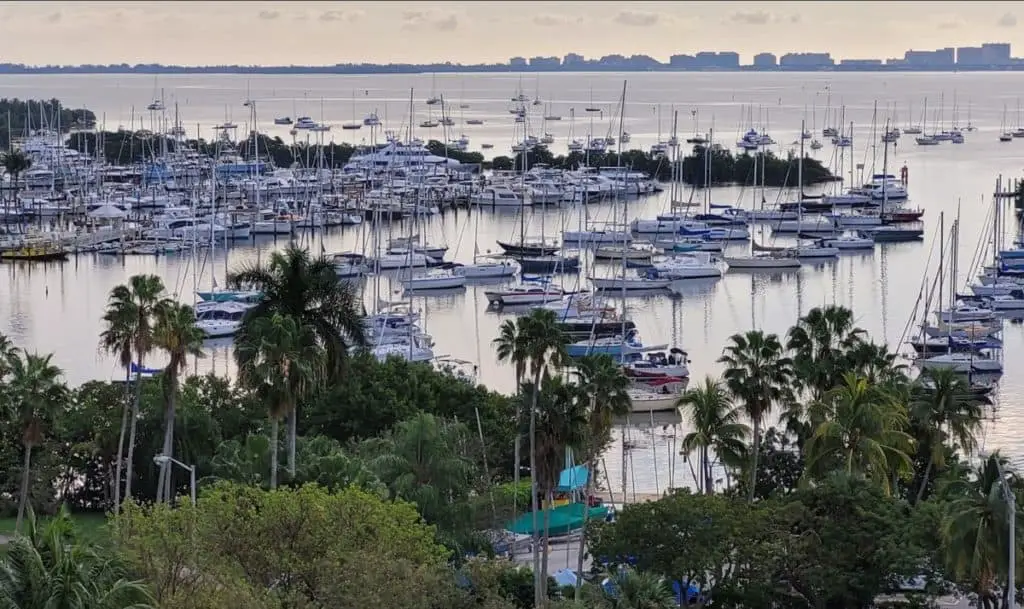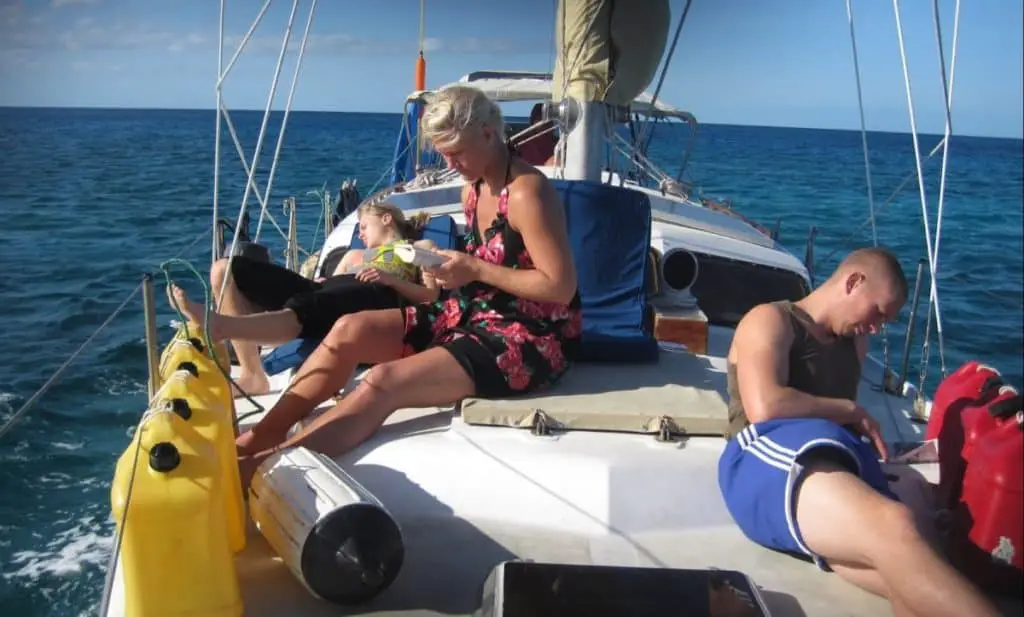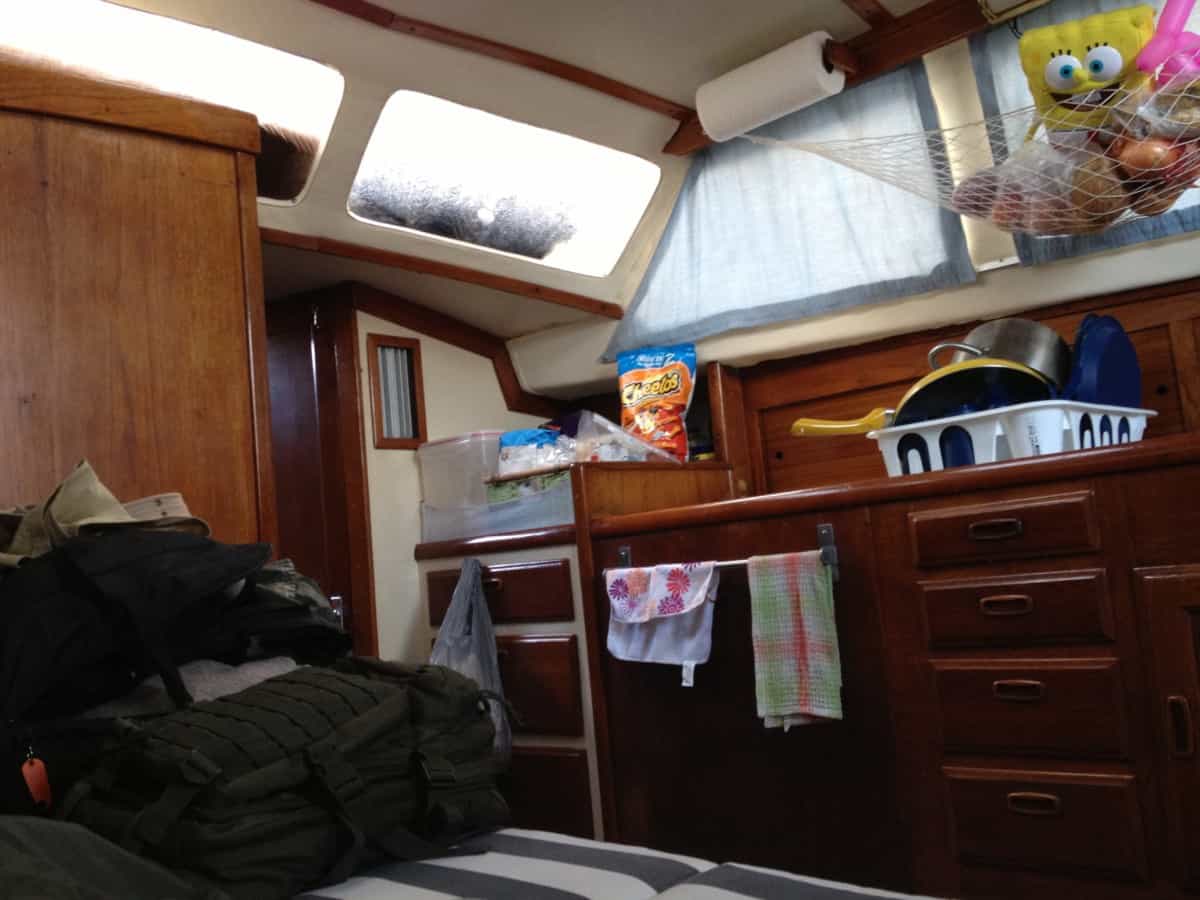As an Amazon Associate, we earn from qualifying purchases. We may also earn commissions if you purchase products from other retailers after clicking on a link from our site.
I have lived in caravans, RVs, and on boats, and I don’t mean I lived a weekend or two I mean I lived full time with no other housing. Part of the time has been here in Sweden and part of the time has been around the world in places such as the Caribbean.
With housing costs constantly on the rise, more and more people are turning to the water for affordable housing. People who reside on liveaboards can find both everyday challenges and exciting adventures when they make their home on the water. But is it worth it?
Living on a sailboat is worth it. Liveaboards provide reduced housing costs and the opportunity to live a nomadic lifestyle. However, some people struggle with the small living spaces, constant repairs, and challenges with finding a safe and legal location for moorage.
The rest of this article will talk more about what it’s like to live on a sailboat. I’ll cover information about why people choose to live on a sailboat, why they decide to stop living on board, and some of the challenges they can face both on the open water and when docked.
What Do People Say About Living on a Boat?
Most people I talk to say that living on a boat is a great experience overall because it gives you great opportunities for travel and a heightened sense of freedom to do what you want. However to make it a good experince, there are some factors to consider. Some of these factors include boat size, safety, and stability.
It’s worth remembering there are two different ways of being a liveaboard, one is where its basically a house on the water and you don’t move your boat, the second one is a more nomadic and adventurous lifestyle where you use your boat as a means to travel the world.
People can have drastically different experiences while living on a boat. Let’s take a look at some of the things they talk about.
Boat Size Matters
Boat size matters when every inch counts towards personal space or storage space. While you can work to maximize the available space with clever storage solutions, the square footage will never change.
Seasoned houseboat residents suggest that it’s best to get the smallest boat you can tolerate despite the size limitations. While a smaller boat means less storage space, they are a lot easier to handle and will fit better into smaller marinas. This can help to minimize your costs while maximizing your freedom.
I like the idea of this, but:
it’s very important to understand what you can tolerate and what will make your life miserable so don’t be too cheap and go too small. And also remember this is not your last decision if you don’t like your boat you can always sell it and get another one or move back to shore.
Consider Safety and Security
Just as different neighborhoods in a city can have different levels of safety, so can marinas. I recommend devoting some time to research before you make any decisions about the marina you would like to live in.
In addition to the marina itself, think about the route liveaboards will take when they disembark. Safety factors may include the neighborhoods you’ll go through to access the marina, available transportation options, and even security features such as gates, fences, locked areas, and security cameras.
And remember this is not your last decision, you can always spend one week in this Marina to try it out, and then spend it in another one, and finally decide for yourself.
See the World
Many sailors report that the ability to see the world and have an adventure is one of the best things about living on a boat. Since you’re not tied down to a specific location, your boat can take you almost anywhere you want to explore.
Even when you’re in a new spot, it’s easy to find a new view just by moving your boat a short distance away. Additionally, you’ll likely find a thriving community of similarly minded liveaboards who are ready to explore their temporary communities and live life adventurously.
When Do People Stop Living on a Boat?
People stop living on a boat when these challenges become a dealbreaker:
- The never-ending maintenance.
- The desire for more living space.
- Growing tired of the nomadic lifestyle.
- Moorage availability/legality.
Let’s explore each of these setbacks in greater detail.
Constant Maintenance and Repair Projects
One thing that never ends on a sailboat is the need to make repairs and perform preventative maintenance. When things break, you’re more likely to take on the repairs yourself, especially if you’re out on the water with no other option.
In addition to being time-consuming and monotonous, maintenance and repairs on a sailboat can be expensive. Waterborne Magazine advises that marine parts can cost upwards of three to four times as much as land-based building supplies, and that sailors should set aside 10% of the boat’s value annually to cover repair and maintenance costs.
I have written an entire article on what it costs to maintain a catamaran.
Want More Living Space

When you live on a sailboat, the space you have on the boat is all you get. There are no ways to add on extra space as you might be able to add a new garage, shed, or even another story to a house while living on land.
If a person grows tired of living in the available space on their boat, their choices are to either buy a bigger boat, pay for a pricey storage unit, or move back to land.
The thing I missed the most when living on my boat was the ability to move around much more freely, since you don’t have a garden or a larger living room your movements are very restricted.
Tired of Nomadic Lifestyle
While a nomadic lifestyle can be desirable to some, it isn’t for everyone. Some people might dream of living aboard a sailboat and exploring the world but then find the reality to be a little bit more challenging than they anticipated.
You can always adjust your liveaboard plan to focus on extended stays in one marina, but this isn’t always possible unless you have a permanent moorage arrangement. Instead, many of these people will choose to leave boat life behind and make a permanent home on land.
Usually, this happens to people somewhere around the 3 to 6-month mark, once people get past this mark they can usually go for several more years because they have figured out a sustainable lifestyle.
Moorage and Marina Availability

Moorage and marina availability can be a serious challenge in popular sailing areas, especially those catering to liveaboard communities. Many marinas have limits on how many nights per week can be spent aboard a boat outside of special liveaboard slips.
This can be frustrating if you cannot secure a liveaboard boat slip or even a permanent moorage point.
In many communities, you can’t just simply move onto a sailboat but must have permission from the marina to do so. They may have specific boat slips set aside for liveaboards, and these can have wait times of over a year in popular locations.
When Is Living on a Sailboat a Good Idea?
Living on a sailboat is a good idea when you’re in need of relief from pricey housing costs, the ability to escape from cold weather, and the opportunity for a relaxed and adventure-filled lifestyle.
Let’s discuss each of these factors in more detail.
Relief From High Rental Costs
Living on a sailboat can be much cheaper than renting an apartment or house. There are many costs incurred on a boat, such as a sailboat itself, insurance, moorage, utilities, supplies, and maintenance costs. However, these are typically much less than the same expenses on land.
Just as housing costs can vary from region to region, so can the costs of living on a sailboat. The moorage fees are one of the most significant variables.
Larger marinas with more amenities can be much more expensive than smaller ones. Typical moorage costs range from $550-$750 per month.
If you want to know how much it costs to liveaboard in a marina in Florida, here’s an article I wrote.
Escape From Cold Weather
When living on a sailboat, warmer weather can be just a boat ride away. The flexibility to seek warmer waters and climates is one of the most significant advantages of living on a sailboat and draws many people to seek out life aboard a boat.
Relaxed and Adventurous Lifestyle
One of the best parts of living on a sailboat is the freedom to live an adventurous lifestyle.
Liveaboards are not restricted to living in just one place but can move around and explore new areas as it suits you. This can be as easy as moving to a new marina in the same region or even moving to an entirely new country.
Life aboard a sailboat also tends to be more relaxed. Although there will always be maintenance needs and everyday chores, all of this tends to happen at a slower pace.
Is It Hard To Live on a Sailboat?
It is hard to live on a sailboat if you aren’t prepared for the lack of space, limited amenities, and the potential for bad weather and seasickness.
Let’s expand upon why some people may find it hard to live on a sailboat.
Lack of Personal and Storage Space

One of the biggest challenges people face when moving onto a sailboat is the extreme lack of space. Most boats simply aren’t large enough to provide extensive space for either personal use or storage.
Personal space can become a serious issue for those who live in tight quarters with other people. Tensions can arise when people don’t feel like they have sufficient personal space and are constantly on top of one another. This can be even harder if bad weather is keeping everyone below deck.
Storage space is also minimal, meaning liveaboards can bring only the true necessities on their sailboat. This can be advantageous for people ready to get rid of their things or store them somewhere on land, such as in a storage facility or a friend’s house. Those who have a lot of material possessions that they want to keep nearby will find this limited storage space to be a much larger challenge.
Living With Limited Amenities
The limited space on a boat also means that there are limited amenities that are often taken for granted in a traditional house or apartment. Some boats don’t have running water, which means sailors must use a compostable toilet, and showers aren’t available.
Everything on a boat will be smaller, including kitchen appliances. The kitchen space is usually relatively small, with little room for appliances such as stoves, refrigerators, ovens, and microwaves. It can be challenging to cook in a small and limited environment, especially for those who like to make complex meals.
Dealing With Bad Weather
No matter where we live, it’s impossible to control the weather. However, inclement weather can be much more challenging when you’re living on a boat. No matter where you are, it’s essential to keep an eye on the weather and remove any loose items from the deck before strong waves or winds arrive.
If you’re docked in a marina, you’ll be somewhat protected from large waves, but your boat may rock and bounce more regardless.
If you’re out on the open water and you know bad weather is coming, you’ll have to decide if you want to try and outrun the storm or ride it out. If you know there are other boats around you, try reaching out to them via radio to get a second opinion on the best course of action. Check any weather information available to better understand the storm’s size and in which direction it is moving.
Limited Space for Overnight Guests and Pets

Sailboats are very limited in space that sailors can convert into extra beds for overnight guests. On most boats, there simply isn’t enough extra space that can be set aside for additional sleeping combinations. Guests can also be an additional liability on a boat.
Additionally, the mattresses used on sailboats may be smaller and less soft than those used in regular beds. This can make it hard for guests to stay overnight comfortably, especially if they are used to traditional mattresses.
If your sailboat has enough deck space overnight, guests can “camp” in the open area using sleeping pads and sleeping bags. They should ensure they’re in a safe space on deck where they won’t interfere with regular boat operations.
These same space limitations can make it challenging for pets to live aboard sailboats. Large pets in particular may not have sufficient room to run and play aboard a small boat.
If you’re planning to bring a pet aboard, be sure to plan for all of their space needs, including exercise, sleep, feeding, and using the potty. For smaller pets, make sure they don’t have access to small spaces where they could become stuck or chew on wires.
Dealing With Seasickness
Seasickness can be a real challenge while living on a sailboat. Although we often think about seasickness as something that can only happen while a boat moves, it can also impact people while docked in the marina.
The water is usually much calmer in a marina, but it can still be choppy depending on the wakes from nearby boats and natural ocean currents.
Sailors can plan ahead and ensure they have plenty of seasickness remedies on board. The standard treatment uses motion sickness medication, such as Dramamine (available on Amazon.com). These pills can be taken before the symptoms of seasickness appear and are made for preventing and treating nausea, dizziness, and vomiting.
If you’re on the market for a more natural alternative to Dramamine, then Nature’s Fusions Vertigo Relief (available on Amazon.com) might work.
Spotty Internet Connectivity

If you live on a sailboat out on the open ocean, you’ll likely struggle with spotty Internet connectivity.
Even if you use a cellular hotspot, internet and phone service aren’t always reliable when away from land. This can be a serious issue for those who rely heavily on having a fast and reliable Internet connection for work.
Internet connectivity and cellular service are much more reliable when you are close to land or docked at a marina.
If you need to have consistent internet access, you may need to plan to spend more time moored and less time out on the open waters.
You can also purchase a Wi-Fi signal booster to improve your level of connectivity, especially when using a marina’s Wi-Fi.
Final Thoughts
Living on a sailboat isn’t the right choice for everyone. It’s worth it for those seeking lower housing costs and opportunities for adventure who don’t mind sacrificing personal space, access to amenities, and a more permanent home base.
However, it’s not a good choice for people who want a more traditional living environment, need lots of storage or personal space, have large pets, or are prone to seasickness.
Before making any permanent decisions, I suggest considering the pros and cons and making choices that best suit your personal living situation needs.
Here are Some of My Favorite Catamaran Cruising Resources
Thank you for reading this article. I hope you found it helpful as you hopefully start your sailing adventures. Here are some resources that I use as a sailor that I hope you’ll also find helpful. These are affiliate links, so if you do decide to use any of them, I’ll earn a commission. But in all honesty, these are the exact things that I use and recommend to everyone, even my own family.
Sailboats: If you’re looking for the best boat to suit your needs, I would recommend a catamaran. If you’re interested, I can show you the differences between catamarans and other types of sailboats.
Books: For getting started, I really like Cruising catamarans made easy. It is actually a textbook from the American sailing association; it is used to get a cruising catamaran certification. There are some other great books, and I have compiled a list of books about cruising catamarans that you will find useful.
Communication: Being out on adventures, whether it be sailing or climbing mountains, good communications are essential to being safe. I recommend two things Google fi (incredibly simple cellular data all over the world) and Garmin inreach mini (for text and voice in remote areas without cell coverage)
Sailing courses: Online sailing courses are great for beginners starting out their sailing career; it’s an efficient way of learning the basics of navigation, throttle controls, and maritime safety. I suggest starting with two free courses from NauticEd.
To see all my most up-to-date recommendations, check out this resource that I made for you!


